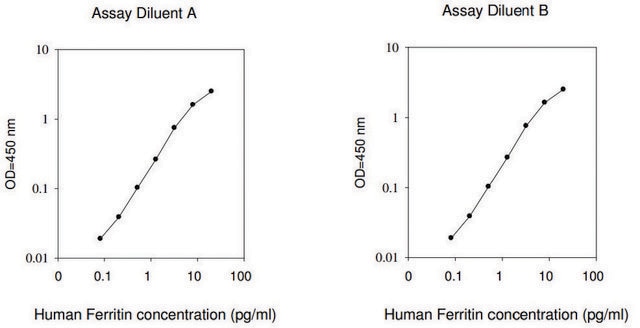Products may be shipped at a different temperature than the recommended long-term storage temperature. If the product quality is sensitive to short-term exposure to conditions other than the recommended long-term storage, it will be shipped on wet or dry-ice. If the product quality is NOT affected by short-term exposure to conditions other than the recommended long-term storage, it will be shipped at ambient temperature. As shipping routes are configured for minimum transit times, shipping at ambient temperature helps control shipping costs for our customers. For more information, please refer to the Storage and Transport Conditions document: https://www.sigmaaldrich.com/deepweb/assets/sigmaaldrich/marketing/global/documents/316/622/storage-transport-conditions-mk.pdf
MAK025
Iron Assay Kit
sufficient for 100 colorimetric tests
About This Item
Recommended Products
usage
sufficient for 100 colorimetric tests
application(s)
cosmetics
food and beverages
detection method
colorimetric
relevant disease(s)
cancer; hematological disorder
storage temp.
−20°C
General description
Application
Suitability
Principle
Preparation Note
related product
Signal Word
Warning
Hazard Statements
Precautionary Statements
Hazard Classifications
Eye Irrit. 2 - Met. Corr. 1 - Skin Irrit. 2
Storage Class Code
8A - Combustible corrosive hazardous materials
Choose from one of the most recent versions:
Certificates of Analysis (COA)
Don't see the Right Version?
If you require a particular version, you can look up a specific certificate by the Lot or Batch number.
Already Own This Product?
Find documentation for the products that you have recently purchased in the Document Library.
-
How is shipping temperature determined? And how is it related to the product storage temperature?
1 answer-
Helpful?
-
-
How can I determine the shelf life / expiration / retest date of this product?
1 answer-
If this product has an expiration or retest date, it will be shown on the Certificate of Analysis (COA, CofA). If there is no retest or expiration date listed on the product's COA, we do not have suitable stability data to determine a shelf life. For these products, the only date on the COA will be the release date; a retest, expiration, or use-by-date will not be displayed.
For all products, we recommend handling per defined conditions as printed in our product literature and website product descriptions. We recommend that products should be routinely inspected by customers to ensure they perform as expected.
For products without retest or expiration dates, our standard warranty of 1 year from the date of shipment is applicable.
For more information, please refer to the Product Dating Information document: https://www.sigmaaldrich.com/deepweb/assets/sigmaaldrich/marketing/global/documents/449/386/product-dating-information-mk.pdfHelpful?
-
-
Is the MAK025 Iron Assay Kit able to detect iron when it is present as ferric ammonium citrate in Mycobacterium tuberculosis 7H9 broth?
1 answer-
In the assay, ferric carrier protein will release ferric ions into the solution when introduced to an acidic buffer. Once these ions are reduced to the ferrous form (Fe2+), they react with Ferene S, forming a stable colored complex detectable at an absorbance of 593 nm. Consequently, the kit should theoretically be capable of detecting iron in the form of ferric ammonium citrate. It is designed to measure iron within a linear range of 0.4 to 10 nmol, or 8 µM to 200 µM iron concentration in various samples.
It should be noted that the concentration of ferric ammonium citrate in Middlebrook 7H9 broth is generally 0.04 g/L, equivalent to 150 µmol/liter.Helpful?
-
-
Can this assay quantify iron contained within heme directly, or is it necessary to first release the iron from the heme for detection?
1 answer-
Iron attached to carrier proteins like transferrin can be quantified with the kit because these proteins will release ferric ions into the solution within an acidic buffer. However, proteins that contain iron, such as those in heme, do not dissociate in this way. As a result, it is not anticipated that iron bound within heme can be measured using this particular assay kit.
Helpful?
-
-
How can the detection of iron in mouse brain homogenate be improved when using the assay kit, given that current measurements are near or below the detection limit?
1 answer-
It is suggested to reduce the quantity of homogenization buffer. For effective homogenization and cell lysis, employing a dounce homogenizer or applying mild sonication is recommended. Furthermore, using a greater quantity of tissue with a reduced amount of buffer might prove to be beneficial.
Helpful?
-
-
To homogenize mouse cells to evaluate iron content with "Iron assay kit", which type of homogenization method is best suited? Thanks
1 answer-
It is recommended to use a Dounce homogenizer, not a "French press" or sonicator, or detergents or beads, for homogenization.
Helpful?
-
-
What is the range of iron concentration that can be measured?
1 answer-
The detection range of this kit is 8 µM - 200 µM.
Helpful?
-
Active Filters
Our team of scientists has experience in all areas of research including Life Science, Material Science, Chemical Synthesis, Chromatography, Analytical and many others.
Contact Technical Service






